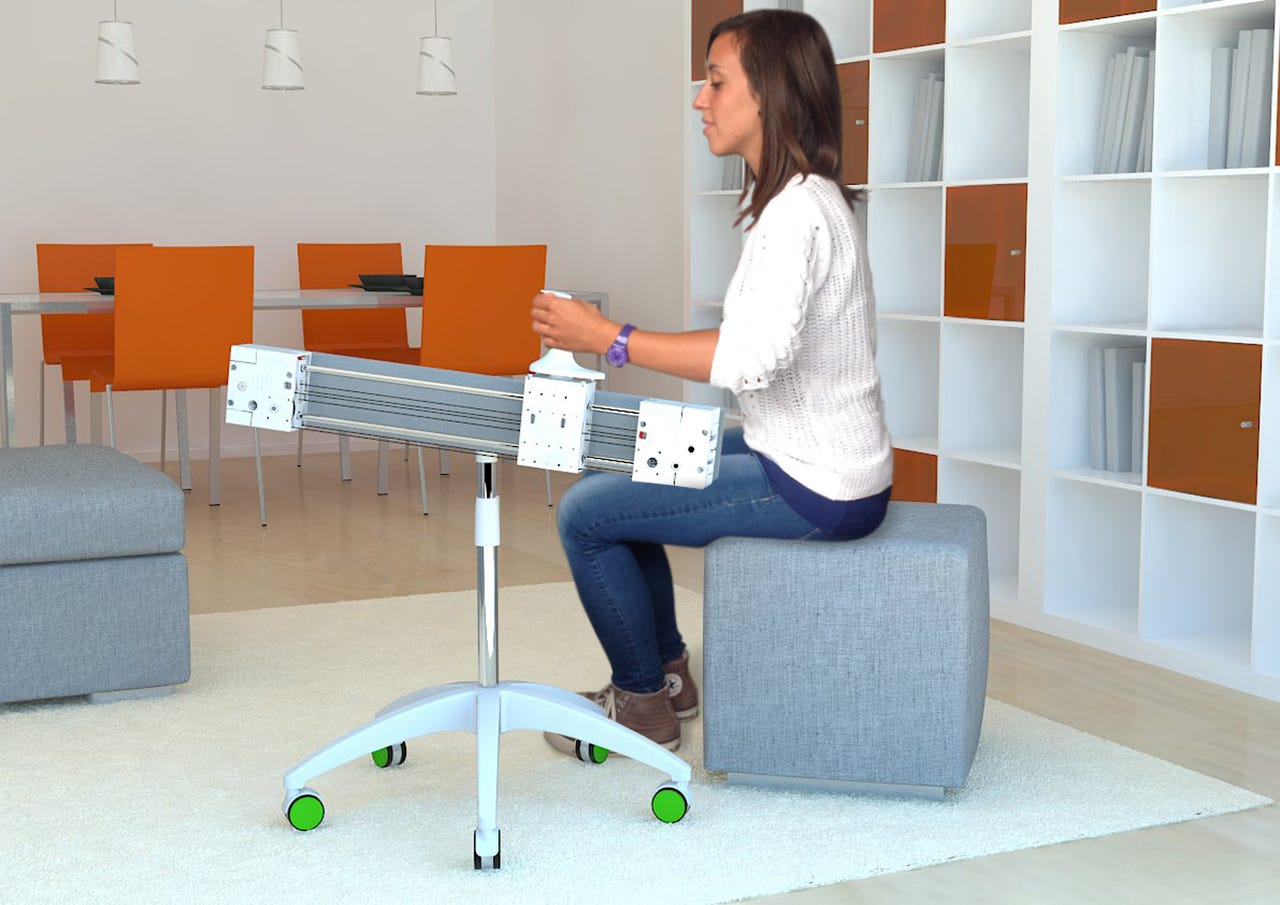11 fabulous futuristic robots from Automatica 2018

Battery sniffing robot
This robot sorts through discarded electrical gadgets to detect batteries. That's important, because discarded batteries are an environmental hazard. It also ensures battery components can be recycled.
The system uses a standard ABB robotic arm, along with special sensing and grasping gear.
ANYmal
A robotic beast, ANYmal is a walking robot with four legs that can carry a variety of sensor packages up to 50 percent of its body weight. Reminiscent of Big Dog from Boston Dynamics, this energy-efficient robot can handle hard impacts and has a high torque at low speeds, making it well-suited to outdoor applications.
The key to ANYmal is modular, design. It can be upgraded with a variety of sensors, making it perfect for inspection and surveillance as well as applications like search and rescue missions following disasters.
Catch, the robotic garden
Catch is a garden. No, it's a robot.
It's both, actually. The garden, which contains cucumbers, is one component in an elaborate harvesting system that uses robots with special bionic grippers, which delicately separate the cucumbers from the plants. The system uses two cameras and may provide a model for future artificial harvesting solutions.
CLARC
CLARC is a robot for the elderly. In fact, elder-care is one of the hottest areas of robotics right now. That's primarily because there are far too many qualified care and service providers to take care of aging boomers.
CLARC is designed to perform geriatric assessment through interaction. The autonomous robot uses a variety of sensors to pick up on cues that might indicate a hard-to-diagnose underlying condition.
FlexSight
A big problem with today's robots is that they often can't quickly determine how to pick up a random object.
That one constraint has slowed down the creation of so-called "lights out" fulfillment for ecommerce.
FlexSight might be a solution. It's a smart camera that enables robots to "perceive a large and widespread class of rigid and deformable objects in an accurate and reliable way and with an impressive computational speed of the whole system," according to the ECHORD++.
HyQ-REAL
Another impressive quadruped, HyQ-REAL can run, jump, and walk through rough terrain, all while keeping its balance and righting itself when unstable.
The robot is set to receive an important update in the form of a battery-powered hydraulic system, which will give it power autonomy and allow it to run untethered. Only in places that don't enforce leash laws, of course.
Isybot
Collaborative robots are becoming commonplace in industries as disparate as components manufacturing, food prep, and industrial machining. Most so-called cobots use force sensors to quickly detect an unexpected impact and change course, making them safe for humans to work around.
Isybot is a collaborative robot that does away with force sensors in favor of an innovative approach that involves measuring electric current at the motors. At moments of contact, the draw on a robot's motor will spike as it tries to push through the obstacle. By using current as an indicator, Isybot can ensure a robot never continues course after unexpected contact. It's a faster, more reliable alternative to force sensors.

LINarm++
Medical rehabilitation is a big market for robots. LINarm++ is used for upper limb neuromuscular rehabilitation. It combines virtual reality with electrical stimulation to guide patients through rehab exercises following injury.
SAGA
A swarm of bugs can be horrible for crops (think locusts). A swarm of robots, though ...
SAGA enables precision weed fighting through the parallel operation of several flying farming robots. The drones take to the air and use advanced machine vision to identify and geotag weeds.
That information can then be used to create a weeding strategy, potentially saving farmers hundreds of hours per year. The system will someday integrate with autonomous weed removal tools, taking human farmers out of the loop entirely.
Sewer Inspection Robot
It's a dirty job. So why not make a robot do it?
SIAR, the sewage inspection robot, is a prototype autonomous ground robot built to navigate and inspect urban sewage systems. Considering sewers are dangerous and undesirable places to work, sending a sensor-rich robot down to inspect infrastructure is a no brainer.
Wiring Robot
Wiring jobs have always been the terrain of experts with particularly dexterous fingers. But wiring components is tedious work.
WIRES (Wiring Robotic System for Switchgears) autonomously wires the switchgears that protect electrical equipment. The robot's custom gripper, which has to be nimble enough to deal with thin gauge wiring, has tactile sensors and a three-axis screw driver holder.
The system is guided by 3D vision and can reduce wiring time by an estimated 40 percent compared to human workers.